Acoustic sensors enable efficient and non-invasive monitoring of a wide range of species, including many that are difficult to monitor in other ways. Although they were initially limited in application scope largely due to cost and hardware constraints, the development of low-cost, open-source models like the Audiomoth in recent years has increased access immensely and opened up new avenues of research. For example, some teams are using them to identify illicit human activities through the detection of associated sounds, like gunshots, vehicles, or chainsaws (e.g. OpenEars).
With this relatively novel dimension of wildlife monitoring rapidly advancing in both marine and terrestrial systems, it is crucial that we identify and share information about the utility and constraints of these sensors to inform efforts. A recent study identified advancements in hardware and machine learning applications, as well as early development of acoustic biodiversity indicators, as factors facilitating progress in the field. In terms of limitations, the authors highlight insufficient reference sound libraries, a lack of open-source audio processing tools, and a need for standardization of survey and analysis protocols. They also stress the importance of collaboration in moving forward, which is precisely what this group will aim to facilitate.
If you're new to acoustic monitoring and want to get up to speed on the basics, check out these beginner's resources and conversations from across the WILDLABS platform:
Three Resources for Beginners:
- Listening to Nature: The Emerging Field of Bioacoustics, Adam Welz
- Ecoacoustics and Biodiversity Monitoring, RSEC Journal
- Monitoring Ecosystems through Sound: The Present and Future of Passive Acoustics, Ella Browning and Rory Gibb
Three Forum Threads for Beginners:
- AudioMoth user guide | Tessa Rhinehart
- Audiomoth and Natterjack Monitoring (UK) | Stuart Newson
- Help with analysing bat recordings from Audiomoth | Carlos Abrahams
Three Tutorials for Beginners:
- "How do I perform automated recordings of bird assemblages?" | Carlos Abrahams, Tech Tutors
- "How do I scale up acoustic surveys with Audiomoths and automated processing?" | Tessa Rhinehart, Tech Tutors
- Acoustic Monitoring | David Watson, Ruby Lee, Andy Hill, and Dimitri Ponirakis, Virtual Meetups
Want to know more about acoustic monitoring and learn from experts in the WILDLABS community? Jump into the discussion in our Acoustic Monitoring group!
Header image: Carly Batist
Wildlife researcher

- 1 Resources
- 12 Discussions
- 5 Groups
- @andrew-1234
- | He/Him
PhD in Ecology; I like software development, and working with spatial and acoustic methods applied to species monitoring and research.
- 0 Resources
- 0 Discussions
- 2 Groups
St. Lawrence University
Professor of Biology at St. Lawrence University
- 0 Resources
- 2 Discussions
- 13 Groups
- @diego_lizcano
- | He/Him
Wildlife biologist interested in biodiversity monitoring and the conservation of mammals. Passionate photographer.
- 0 Resources
- 0 Discussions
- 7 Groups
- @ecosystem2
- | he/him
- 0 Resources
- 0 Discussions
- 5 Groups
wildlife crime WWF-NL
- 0 Resources
- 2 Discussions
- 6 Groups
- 0 Resources
- 0 Discussions
- 5 Groups
- @sruizguz
- | He / Him / His
Laboratory research technician at the Kitzes lab - University of Pittsburgh. My research focuses on acoustic monitoring for ecology and conservation.
- 0 Resources
- 0 Discussions
- 4 Groups
- @jenlaw
- | She/Her
Biodiversity scientist specialising specialising in the study of tropical ecosystems and their biodiversity using multiple forms of technology, including acoustics, images and robotics.
- 0 Resources
- 0 Discussions
- 14 Groups
- @dieagomezmor
- | he/him/his
Master in biology with a background in GIS, bioacoustics and soundscape ecology.
- 0 Resources
- 0 Discussions
- 3 Groups
The University of Queensland
Passionate about using technology and data to solve conservation issues.
- 0 Resources
- 2 Discussions
- 9 Groups
- @ldbraunholtz
- | she/her
(Tropical) forest ecologist w interest: biodiversity, camera traps, community led conservation & more. Passionate about inclusive nature for all.
- 0 Resources
- 0 Discussions
- 10 Groups
Hi! We're engineers eager to understand how technology can simplify acoustic work. If you use recorders, your input would be invaluable. Please consider taking our 5min survey. As a thank you, participants will be...
23 January 2024
Come join our team! We're looking for a Program Officer to join the WILDLABS Community, hosted by WCS in Argentina. This role will support our research program, with the chosen candidate leading our horizon scanning...
22 January 2024
Careers
We're hiring ecologists for immediate start / remote working / short contract
19 January 2024
Two years in Cape Town, South Africa. Yearly visits to Rwanda. If you love to code, and all things Python/deep learning/tech stuff/ then you'll have an awesome time!
16 January 2024
This article discussed early work on modeling how acoustic properties of the environment will change with variations in weather.
9 January 2024
Analysing recordings of gunshots could help save endangered species around the world by identifying poacher hotspots.
7 January 2024
Digital monitoring tools are helping rangers protect wildlife in South America's Atlantic Forest. Could sound-based maps pin down the poaching threat?
7 January 2024
The IQOE Task Team on Low-Cost Hydrophones for Research, Education, and Citizen Science is looking for industry partners to develop a low-cost hydrophone.
15 December 2023
Article
How to engage decision makers for a more sustainable land management for both citizens and landowners in developing countries.
15 December 2023
Sharing our startup's webpage, featuring information about our services and products. We are open for new partnership, collaboration R&D project in the field of GIS data analysis.
15 December 2023
With the support of Women in Conservation Technology (Kenya) and Arm, I had a chance to work with Kijabe Environment Volunteers in Kikuyu Escarpment Forest. This was an opportunity to channel my passion for the...
1 December 2023
Prospective PhD students with a background in acoustics and an interest in Arctic ecology are encouraged to email Michelle EH Fournet
16 November 2023
June 2025
July 2025
September 2025
event
October 2025
November 2025
event
February 2024
December 2023
event
61 Products
| Description | Activity | Replies | Groups | Updated |
|---|---|---|---|---|
| Hi Mona. Yes, this is what we certainly what we are considering, but how to measure these indices by the hands of non-experts in the field is the advice that I need from the WL... |
|
Acoustics | 1 day 7 hours ago | |
| Would that be able to process locally stored acoustic data? One of the great things about birdnet analyzer is that it is local - it doesn't require uploading terabytes... |
|
Acoustics | 3 days 22 hours ago | |
| Do you collect or use sound recordings of habitats or species like birds, frogs, mammals, or insects in India? We need your expertise!... |
|
Acoustics | 1 week 2 days ago | |
| My name is Frank Short and I am a PhD Candidate at Boston University in Biological Anthropology. I am currently doing fieldwork in Indonesia using machine-learning powered passive... |
|
Acoustics, AI for Conservation, Animal Movement, Data management and processing tools, Early Career, Emerging Tech, Ethics of Conservation Tech, Protected Area Management Tools, Software Development | 2 weeks ago | |
|
|
Latin America Community, Acoustics, AI for Conservation, Camera Traps, Drones, Early Career | 2 weeks 6 days ago | ||
| There are a lot of parameters in principle here. The size of the battery. How much time in the field is acceptable before a visit? Once a week? Once a month? How many devices you... |
|
Acoustics | 3 weeks 1 day ago | |
| Hi Tom! I think the furry windjammer must be outside the casing to have the desired effect. It can be a bit tricky having this nice furry material that birds and other critters... |
|
Acoustics | 3 weeks 3 days ago | |
| Hi Lana,"similar field setup" means that the vocalizing animal should be surrounded by the recorders and you should have at least 4 audiomoths recording the same sound, then the... |
+9
|
Acoustics | 3 weeks 3 days ago | |
| Fantastic! Can't wait to hear updates. |
|
Acoustics | 4 weeks 1 day ago | |
| New stable release : v1.5.1We are pleased to announce the latest release with several important enhancement, fixes and documentation improvements to ensure compatibility with the... |
+15
|
Acoustics, AI for Conservation, Open Source Solutions, Software Development | 1 month 1 week ago | |
| Hello everyone,Thank you all for your contribution!You can read some updates about this project in this post.Julia |
|
Acoustics, Community Base, Data management and processing tools, Open Source Solutions | 1 month 2 weeks ago | |
| Hi Ryan, hmm, I had no idea there was a microphone named that. I thought about how it’s used to lure birds for netting, and I like Greek Mythology. I thought it was a perfect fit... |
|
Acoustics, Emerging Tech, Funding and Finance, Protected Area Management Tools, Software Development | 1 month 2 weeks ago |
Wolf detector prototype
30 April 2016 2:10pm
23 May 2016 1:19pm
Hi Nuno,
Still working on the design, and in particular the microphone technology so that we can be confident of detecting animals at long range. Our current system using SM3s works well up to several kilometers.
Where are you planning to detect wolves? Will you be at CSF next month? We could talk more there. But keep an eye on this thread and I'll post updates.
Thanks,
Arik
5 June 2017 6:22pm
Hi guys, interesting discussion. As you may have read, we are developing an elephant-detector (to avoid HWC's). The technology we are using (neural networks) can also be used to learn to recognize wolves automatically. If you have wolf-sound samples for us, we can create a classifier to automatically process your recordings. Alternatively we may be able to run the classifier in real-time on a RPi. But like you mentioned above, power consumption is an issue. Maybe less so if we can mount the sensor on a street light with car battery or something. What do you think?
Comparing two sound wave files - for a conservation game
20 March 2017 8:59am
29 March 2017 8:46pm
Dynamic Time Warping is often used as a foundation.
30 March 2017 1:47am
Hey Gautam!
Could you share few sample files? I want to try out a couple algorithm and see if that's useful to you.
Thanks,
Bhavesh
7 April 2017 1:42pm
Hi Bhavesh - thanks a lot. WildLabs doesn't allow me to upload .wav files - can I email you or get them to you another way? They are small - 2 seconds each.
You can email me at gautam@internetofelephants.com
Gautam!
#Tech4Wildlife Photo Challenge: Our favourites from 2016
1 March 2017 12:00am
Conservation Leadership Programme 2017 Award
21 November 2016 12:00am
Neotropical Migratory Bird Conservation Act grants via USFWS
8 November 2016 12:00am
Moonshots - Where will we be in five years?
7 October 2016 4:52pm
3 November 2016 9:05am
Hi Courtney,
sounds are indeed a very interesting theme. If you ask me, it is one of the most underestimated senses, especially when we are talking about wildlife protection. People tend to make quite a lot of noices that distinguish them from animals ;-)
I am working on a prototype 'soundscape sensor'. The basic idea is to record all sounds at a particular location and calculate a kind of 'normalised' sound. This summary can then be used to listen to sounds that deviate from that. Could be chainsaws, gun shots, car engines, talking people, barking dogs, whatever.
By feeding these sounds to rangers with local knowledge, or to a crowd (like Panthera is doing), the sensor's performance improves over time.
Although we think our first prototype will be ready by the end of this year (recognizing one particular sound within an outdoor environment), subsequent steps are quite challenging. Especially when more than one or two sounds occur at the same time.
If you ask me where we will be in the next few years, I would say:
2017: recognizing any trained sound within a given field context (using a Raspberry)
2018: learning to distinguish compounded sounds (using a backend server)
2019: idem, but then much more efficient, so we can run it on a Raspberry pi
Interested to help us to create this?
Cheers,
Jan Kees
3 November 2016 9:19am
My moonshot would be increased used of DSP in underwater acoustic monitoring, to enable small arrays to filter out engine noise to look for vocalisations; statis reflections of exiting noise sources, and doppler reflections too. Heavyweight DSP might be enough to gauge the size of objects and a useful distance estimate too…
3 November 2016 9:56am
sorry, double entry
Zoohackathon: 'END LOOP - Coding to end wildlife trafficking'
22 September 2016 12:00am
Choosing a Journal for Publication
8 June 2016 3:16pm
9 June 2016 5:38am
Hi Courtney,
Jason mentioned some very good journals (and there are many more) that cover broad areas of research as indicated by the journal titles. Perhaps your paper might fit into any of them.
However, people can give you more focussed recommendations if you tell us what research questions you addressed. At this point we only know what kind of technology you used.
Is technology itself the main topic of your paper? Or are you reporting what you learned about tiger biology/ecology through using accoustic technology?
Julia
27 July 2016 5:44pm
Hello Julia,
Apologies for the delay in response!
The objective of this study was to determine if unique acoustic patterns exist among Panthera tigris tigris individuals, and if sex (e.g. male vs. female) can be discriminated based on their vocalizations. We used Songmeter SM2's to record tigers then Raven Pro Analysis Software to analyze their vocalizations and identify which vocalization characteristics (e.g. min/max fundamental frequencies, call duration, etc) identified each tiger.
The study was to establish what vocal cues we could use for future acoustic monitoring networks for Panthera tigris in the wild.
Edit: I should also clarfiy this data was collected in ex-situ conditions with the implications of applying the gathered knowledge to in-situ conditions.
9 September 2016 2:30am
Hello Courtney
My turn to apologies for delay. Your study sounds very interesting and potentially a valuable technique for future in-situ research. Seems it could indeed fit journals with a broad scope concerning wildlife ecology and conservation (including those mentioned earlier in this thread) and not narrowly limited to accoustics. I hope you are progressing towards publishing your work and I look forwarrd to reading it!
Acoustic monitoring survey (WWF-UK)
14 June 2016 3:29pm
29 June 2016 9:42am
Hi Rory,
Thanks for sharing this survey - it'll be really interesting to hear what comes out of it. How are the results going so far? Has anything unexpected come up?
Cheers,
Steph
6 July 2016 10:44am
Hi Steph,
All's going well with the survey so far, thanks, though if anyone here has the time and inclination to share it further across their networks that'd be greatly appreciated - we've got quite a bit of feedback so far from members of the scientific community (and would like more!) but proportionally much fewer from the NGO/consulting sectors, which would also be really helpful.
That said, the results so far have been really useful. We've had some great, in-depth responses about experiences deploying acoustic equipment in a range of different environments, but also the responses have emphasised that many of the problems/challenges we've experienced in our lab group are common to almost everyone working in acoustic monitoring, regardless of environments/species of interest - the kind of info that's really useful for the report that will come out of this.
Cheers,
Rory
27 July 2016 5:43pm
Great survey idea, Rory! I am completing it for my organization now so you should see another form input shortly.
How can technology help us monitor those small cold-blooded critters that live in caves?
25 July 2016 12:00am
Passive Acoustic Monitoring: Listening Out for New Conservation Opportunities
29 June 2016 12:00am
Acoustic monitoring for locating wolf packs
26 March 2016 12:01am
13 April 2016 5:20pm
Greetings everyone,
I apologize for being somewhat absent in this thread as of late. But, I am very interested in this conversation regarding building a recorder with a decent localization platform (including the sound detection for gunshots!). If the discussion continues outside of this thread (i.e. an email chain), please include me in it as well! I can provide my email through private message.
13 April 2016 6:28pm
Hello all- When there are future updates with this project, please do continue to post them to this thread as it progresses. Thanks! The community would love to see updates.
24 June 2016 9:38am
For those who are interested in this thread, Arik has posted his new prototype in a new thread, where the discussion has continued.
Calculating species abundance from Acoustic Data
26 January 2016 1:22pm
26 April 2016 10:45am
Hi,
I think Steffen provided a good summary of the challenges.
IMO, the two most promising methods of estimating animal density from acoustic monitoring are the "generalised random encounter model" (gREM) and an extension of spatially-explicit capture-recapture (SECR). These potentially solve Steffen's problems 2 and 3, i.e. linking acoustic counts to abundance (2), and converting abundance to density (3).
gREM, although theoretically possible, may be tricky in practice (especially obtaining an estimate of how wide an animal's acoustic signal is). See here:
http://onlinelibrary.wiley.com/doi/10.1111/2041-210X.12346/abstract
SECR is potentially very powerful, but depends on an independent estimate of calling rate (a problem Yu Shiu rightly picked up on). I think this would be entirely possible for a species you can find and observe (e.g. a frog or common bird species), but difficult for lots of cryptic, low density species (e.g. tigers!, as Courtney mentioned). See here:
https://www.researchgate.net/publication/272371302_A_general_framework_for_animal_density_estimation_from_acoustic_detections_across_a_fixed_microphone_array
However, gREM and SECR do not help with Steffen's first point (1) "quantifying the number of vocalisations from a stream of acoustic recordings". Others might be able to advise on the best approaches there. Perhaps this is primarily a software / data processing problem...?
In terms of sampling design (as Mariane and Courtney were interested in), it depends what your aims are. For occupancy (which is not equal to abundance/density), similar design principles to camera-trapping are fair (but taking into consideration Yu Shiu's point that the effective sampling area might be MUCH larger for an acoustic sensor than a camera trap, so camera spacing will have to be larger too). For gREM, you can fairly flexible about sampling design (repeated detections of the same individual are not a problem), but your sensors should be set randomly in space (with respect to animal movement), not along trails etc. For SECR, you don't have to set your sensors randomly, but sensors must be close enough together for repeated detections of the same call in multiple sensors simultaneously (this design constrasts, therefore, with an occupancy design).
Hth,
Ollie
26 April 2016 11:59am
Hi Stephanie,
This is an interesting thread. For those interested in the topic, and forgive me for the blatant self-promotion of work, a Biological Reviews 2013 paper on the topic can be downloaded here http://www.creem.st-and.ac.uk/decaf/outputs. Additional case studies papers as well as a more general public paper in Acoustics Today are also available for download from the link. This link is the outputs page from project DECAF, dedicated to estimating animal density from passive acoustic fixed sensors, using cetaceans as case studies. The methods have been far more developed and used in the cetacean community, but I suspect a wider use in terrestrial environments will occur in the coming years. A key hurdle is perhaps the dynamics involved in acoustic cue rate production, but the issues will be much easier to tackle in terrestrial environments than in the marine environments we have been working on.
Hope this is helpful,
Tiago
26 April 2016 12:13pm
Hi Tiago,
Thank you for sharing this paper and contributing your experience to the thread. Blantant self promotion, as you put it, is more than welcome when the work you're pointing to is such a helpful resource!
Cheers,
Stephanie
Funding and Job Opportunities
26 November 2015 2:21pm
26 February 2016 3:26pm
The Elephant Listening Project at the University of Cornell is looking a Postdoctoral research to study forest elephants in central Africa using a combination of field observations and acoustic recordings. More info.
A novel citizen science approach for large-scale monitoring of bats
5 February 2016 12:00am
Report outlines 2016's most pressing conservation issues
3 February 2016 12:00am
Must-Have Books on Bioacoustics
31 January 2016 4:26pm
(News Article) Listening to the sounds of nature 24-7 in Alberta
31 January 2016 4:16pm
Ecological Acoustics (Ecological Informatics special issue)
29 December 2015 9:56pm





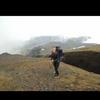







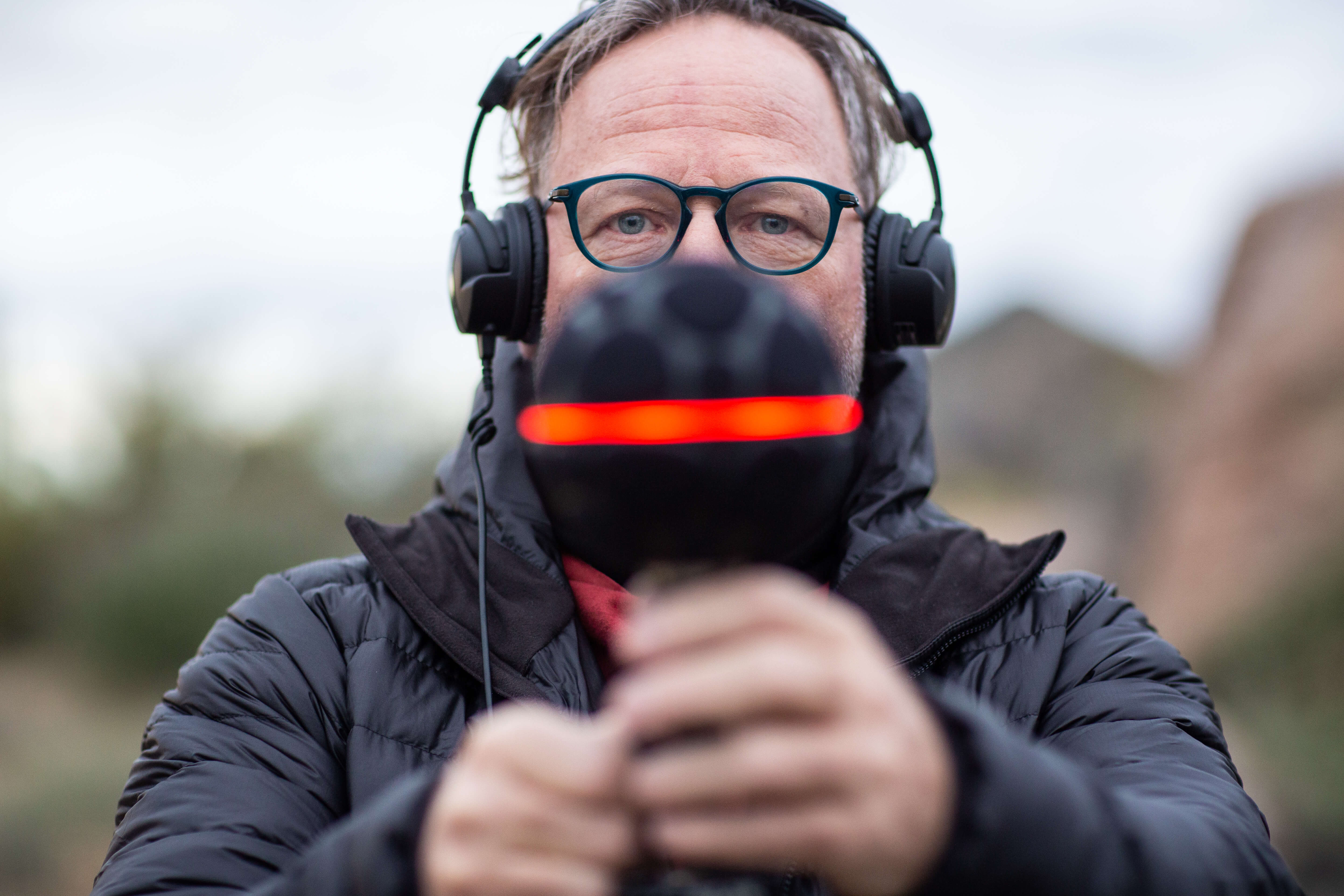






























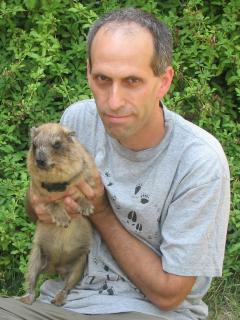









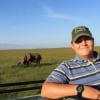



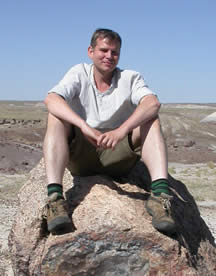

23 May 2016 1:16pm
Hi Arik
Did you already test it with wolves?? I would be very interested in learning your results as I am preparing some accustic monitoring of wolves for my PhD.
keeping in touch
Nuno